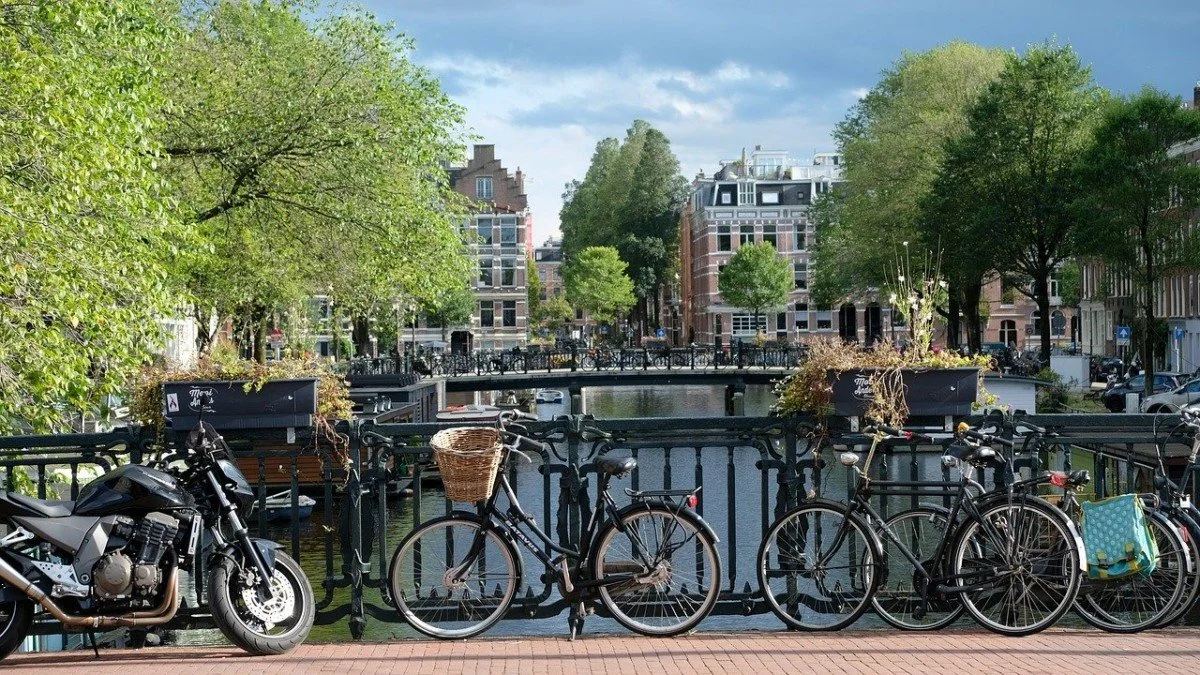After yesterday I've been thinking about design - and how we can move away from complex legacy systems, be they digital or organisational.
Travelling across the city this morning you'd think Amsterdam had been designed in a laboratory rather than a city that has evolved over 746 years. It's great to walk around, there’s no traffic jams, and there's an easy (and cheap) to use train, metro and tram system.
And then there's the bikes. The Netherlands boasts 22,000 miles of cycle paths. More than a quarter of all trips are made by bicycle, compared with less than 2% in the UK – and this rises to over 38% in Amsterdam.
Amsterdam wasn't built that way - in fact 50 years ago the city was at risk of being overrun by cars.
So how did they change? The Dutch understood design thinking and that just because you build something people don’t automatically follow. It wasn’t enough to just provide cycle lanes, you had to make cyclists feel as safe as if they were in a car. And that meant rebalancing the power of the automobile. This has been done through wider cycle lanes protected from traffic and design principles,
The point I’m trying to make is that the Dutch have successfully taken a legacy infrastructure and innovated around it, completely changing people’s behaviours NOT through penalising them, but through creating a more fulfilling and pleasant way to live,
Back to digital.
We have new opportunities to put design front and central in our organisations , and that includes the creation of digital twins of properties and even our communities. A digital twin is a virtual representation of an object or system that spans its lifecycle, is updated from real-time data, and uses simulation, machine learning and reasoning to help decision-making.
Imagine instead of a record of a property and its components you had a copy of it, a twin, with sensors within the property constantly updating its condition. This isn’t science fiction, but a perfectly achievable reality.
Joep Grosveld showed us a glimpse of life beyond conventional construction, where modular homes built by robots and fitted with sensors create a twin of the physical build that is now predictive.
A home that can tell if a roof tile needs replacing. A home that can know if a tap is leaking. A home that can get help for the problem before the resident knows there is one.
Dirk Huibers of Spotr provided some practical examples about how this type of thinking could be applied to existing homes. He gave a fascinating challenge that should make every housing association sit up and listen: "Every time you send a surveyor out to a home without a drone is a wasted opportunity".
The young guy you see in the photo is literally a walking camera and can do a complete internal inspection in about 10 minutes. The combined imaging is then compressed to create a digital twin.
And finally , a session on the metaverse and how we could use it in the sector. I sensed (me included) a kind of despondent response from delegates to Zuckerberg’s slightly dystopian visit. Perhaps it’s just timing - post pandemic most of us are still enjoying time around real people in real places again rather than being excited about losing more of ourselves to the digital world.
That said, we did see some opportunities that Matthew Gardiner neatly summarised for us:
Improving participation for groups excluded by facets of the “real world”.
Making property viewings or design walkthroughs truly immersive and “family friendly” events
Building new communities to combat isolation and loneliness
Creating new revenue streams for landlords, and even
A new way of doing Board meetings
And finally finally, a message from Ian Wright that gets all the thumbs up from me.







